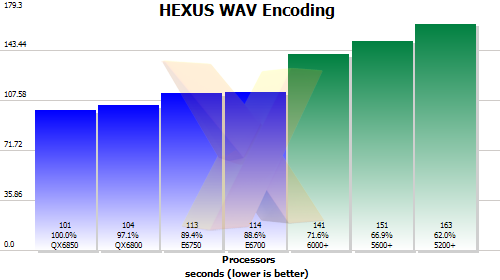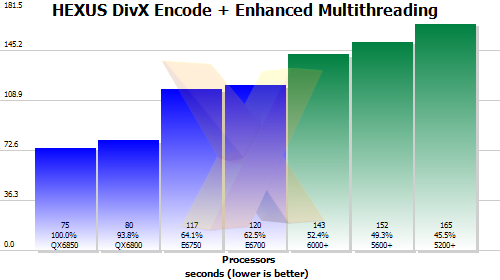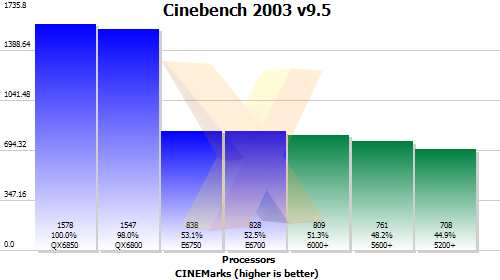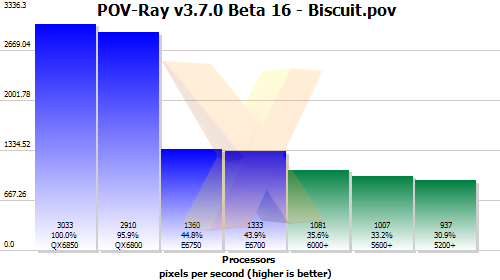Multi-threaded performance
This page evaluates multi-threaded application performance but one apparent surprise is that the dual-core parts are performing close to the quads - at least in one test.
The reason is simple, though, as you'd have clearly seen if we'd thrown a similarly-clocked single-core processor into the mix.
While the HEXUS WAV Encoding test is multi-threaded, it is only able to execute two threads simultaneously.
Therefore, the quad-core processors end up with two cores twiddling their silicon fingers.
Even so, the Core 2 Extreme QX6850 still comes top, thanks to having a higher clock speed than the QX6800. The Core 2 Duo E6750 takes a slim (one-second) lead over the E6700 due, most likely, to its faster front-side bus.

But none of AMD's Athlon 64 X2s is able to get close, the best performing being the 6000+ and that finishes over 25 seconds behind the E6700.

The HEXUS DivX Encode test allows the quad-core parts to stretch their legs a little, although we don't see true performance scaling. The QX6850 comes in some 42 seconds ahead of the E6750 but we'd hoped to see improvements closer to 50-60 seconds given the higher clock speed.
Quite why this is the case isn't clear. It could be because, with Kentsfield, all four cores are not on a single piece of silicon. Alternatively (or additionally) it might be the result of a limitation in the algorithms used in the DivX encoder. Possibly, some stages of the DivX-encoding process are not implicitly parallel. That would certainly hurt the scaling of the multi-core performance.
Even so, each processor with a 1333MHz front-side bus is able to draw out a lead over its 1066MHz counterpart, so DivX clearly enjoys the extra bandwidth provided.
The Athlon 64 X2 6000+ is unable to keep pace with the any of the Core 2 chips, falling 23 seconds behind the E6700.

This is more like it! With CINEBENCH 2003, we see the quad-core processors really stretching their legs. The QX6850 just edges ahead of the QX6800, probably due to its slightly higher clock speed.
There's little difference between the score of the E6750 and E6700 and, while both manage to stay ahead of AMD's Athlon 64 X2 6000+, the margin is much smaller than in the preceding tests.

The POV-Ray test carries out ray-tracing. Virtual rays of light are cast into a scene to render the view from the camera's perspective.
And, as you can see, this test scales almost perfectly with processor clock speed and cores - the QX6850 and QX6800 are able to calculate more than twice as many pixels per second as the E6750 and E6700.
Once again the AMD processors are left trailing, the 6000+ rendering almost 25 per cent fewer pixels per second than the E6700.









